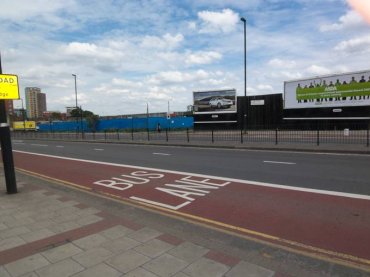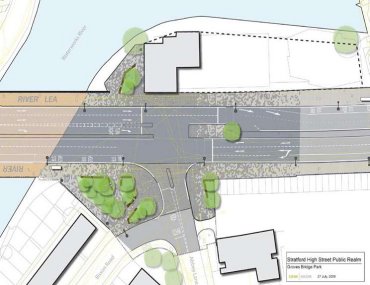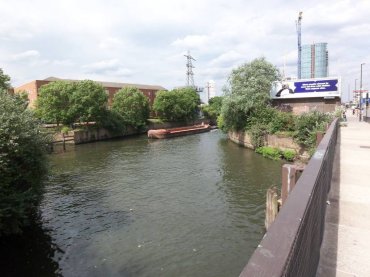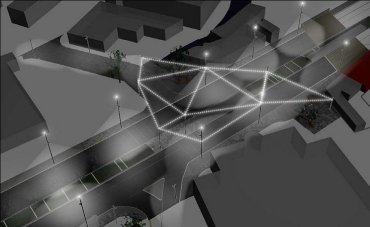Stratford High Street Public Realm ImprovementsInterim Client and Outline Design Award |
... |
95.1% |
The Project:
The Stratford High Street Public Realm Improvements project involves changes to the public realm along and in side streets off Stratford High Street extending from the Bow flyover to the Stratford High Street DLR station.
The existing Stratford High Street is a hard-edged landscape dominated by traffic. The project proposes to provide a modern, attractive, simple, unfussy, high-quality public realm that will change the image and perception of the High Street.
 |
 |
There are a number of influential projects planned or already underway in the area including CTRL and Crossrail, Stratford City Development, but in particular Stratford High Street will receive worldwide attention with the Olympic Games. The Greenway, one of the major walking routes to the Olympics, crosses the High Street and it is also the route of the final stage of the Olympic Marathon.
Improving the public realm within Stratford High Street will have economic benefits for the local community and it is seen as an essential element in attracting investment into the area.
The works involve:
- Removal and replacing street furniture, signage and lighting
- Repaving the footways and resurfacing the road
- Planting of streets and medians and creation of pocket parks
- Creation of a pedestrian crossing to improve access to the DLR station
- Soft traffic calming measures.
The water environment:
Stratford High Street has historically been an important causeway across the River Lea and its adjacent waterways and marshlands. The main principle behind the design is to make pedestrians and motorists aware of the river passing beneath the road by highlighting Groves Bridge and using materials and planting found associated with the surrounding waterways. Features include:
- The use of different materials on the carriageway and pavement surface of Groves Bridge and the words ‘River Lea’ will be written in the pavement to emphasise the connection with the river flowing underneath
 |
 |
- Areas of tree planting with Salix species common to the waterways of the Lea Valley on both sides of the carriageway east of the bridge
- Areas of tree planting will be defined by bold timber edges and bespoke timber benches, picking up on the timber structures found in surrounding waterways and locks. Benches are to be constructed from readily available UK-grown oak timber (FSC-certified).
 |
 |
Ecology and biodiversity
A key objective of the project is to increase and improve the quality of the greenspaces. The design proposes to maintain all healthy existing trees and mature vegetation. Native tree and shrub species have been specified to ensure minimal irrigation is required beyond establishment. London Plane has been specified for the medians as it is pollution-tolerant, Native Ash has been selected to add diversity, while Rowan has been chosen along Channelsea Path for its ability to attract birds. For the amenity grassland areas, a species-rich native meadow mix has been specified rather than turf or lawn to encourage biodiversity and to balance the water environment.
Energy conservation
In addition to the installation of energy-efficient lighting, the wattage will be lowered. Solar cell sensors are specified to assure lighting only turns on when it is needed and to further reduce energy, lighting will be dimmed at off-peak hours. A number of soft traffic calming measures are proposed to reduce the speed of traffic, which will help to economise fuel consumption.

Materials
Existing kerbs will be re-used on site where possible, either as the new median in the centre of Carpenters Road, as buried ‘dead men’ for tree stabilisation and as small stepping stones across the meadow in Channelsea Path. Materials, including concrete paving, street furniture and timber, will be specified to be manufactured in the UK.
Community and stakeholder engagement
There has been significant community consultation and engagement on the proposals both under the wider Street 2012 Vision project and the Stratford High Street project itself. In particular, feedback on the proposals received at a public consultation event in September 2009 was overwhelmingly positive.

